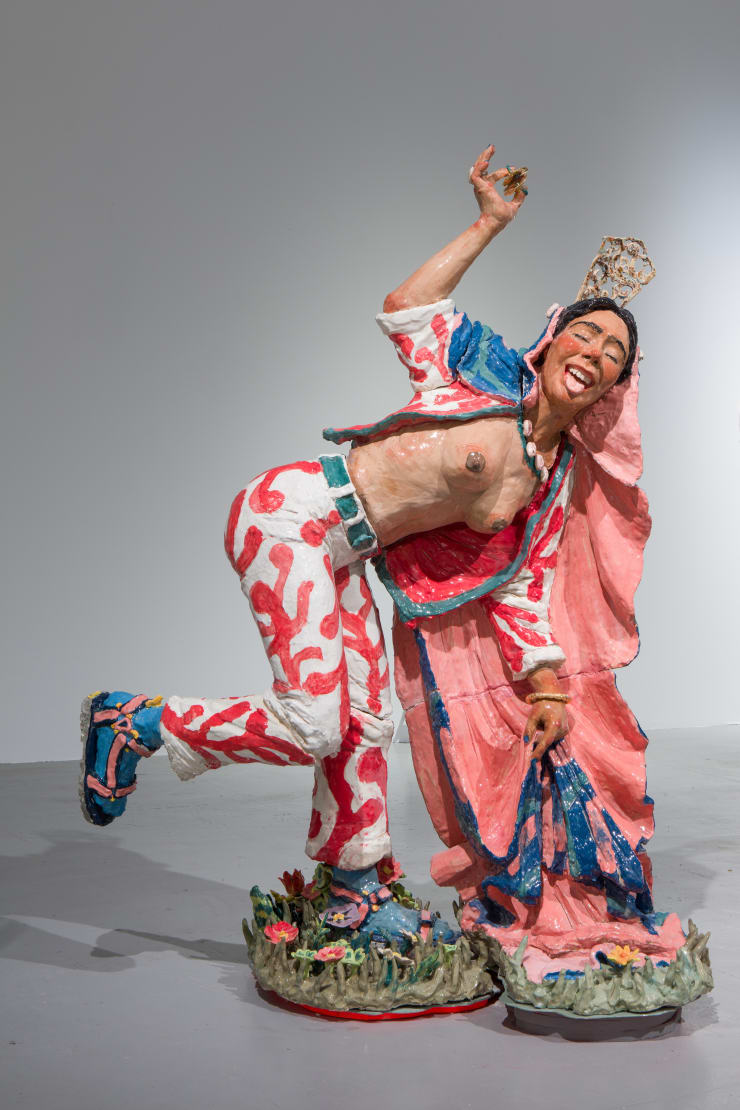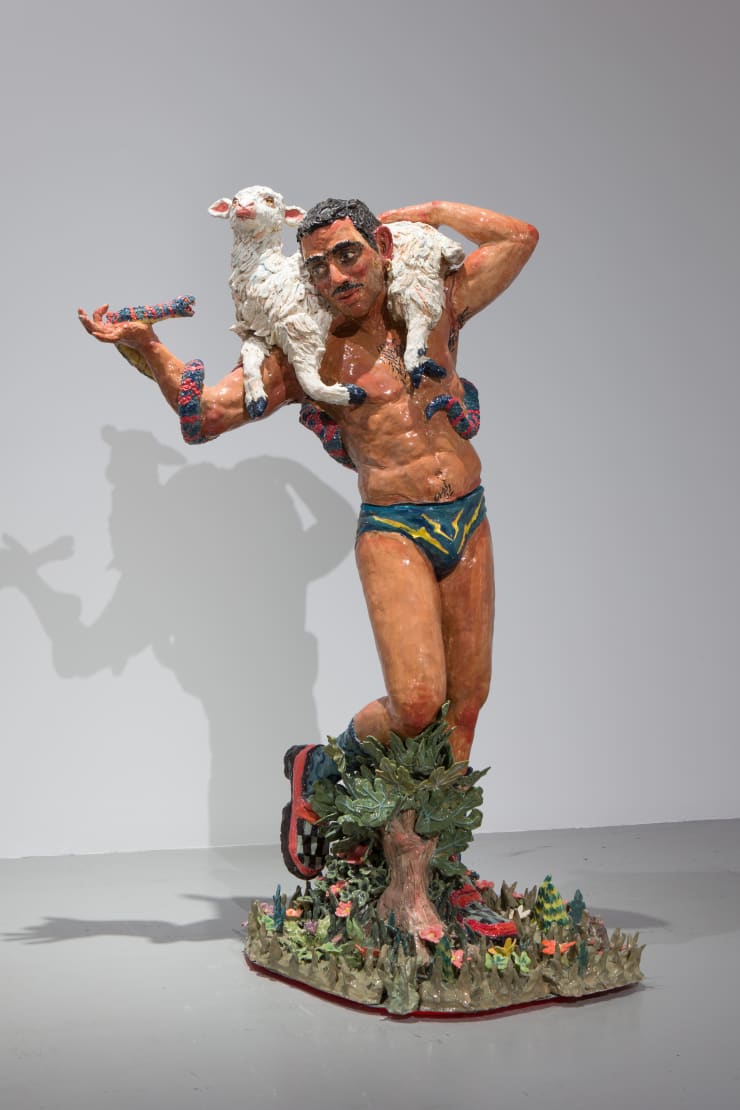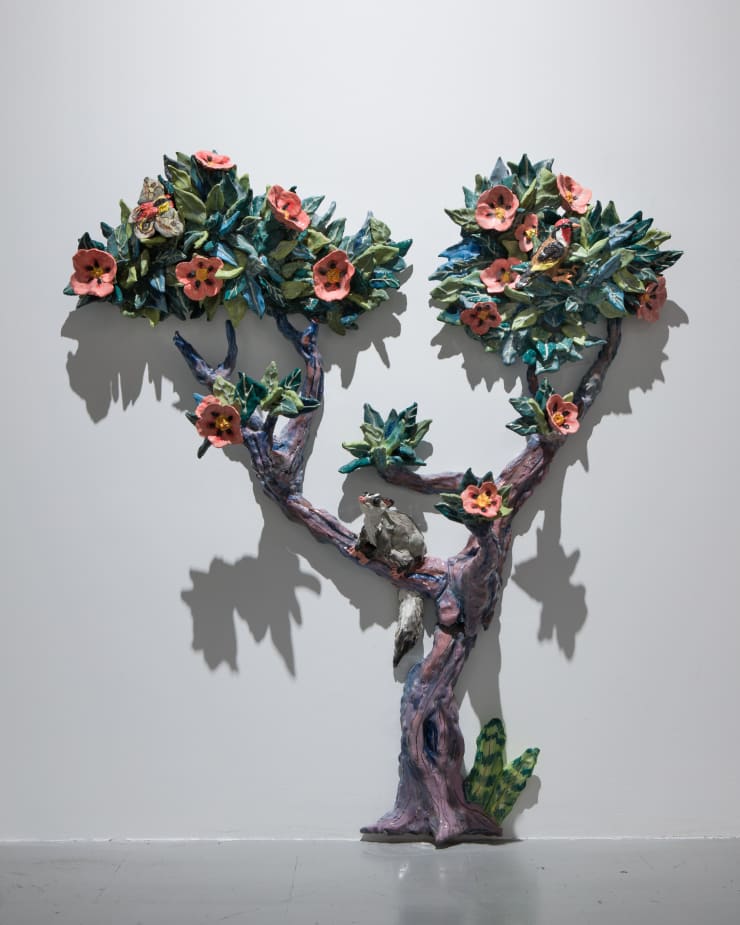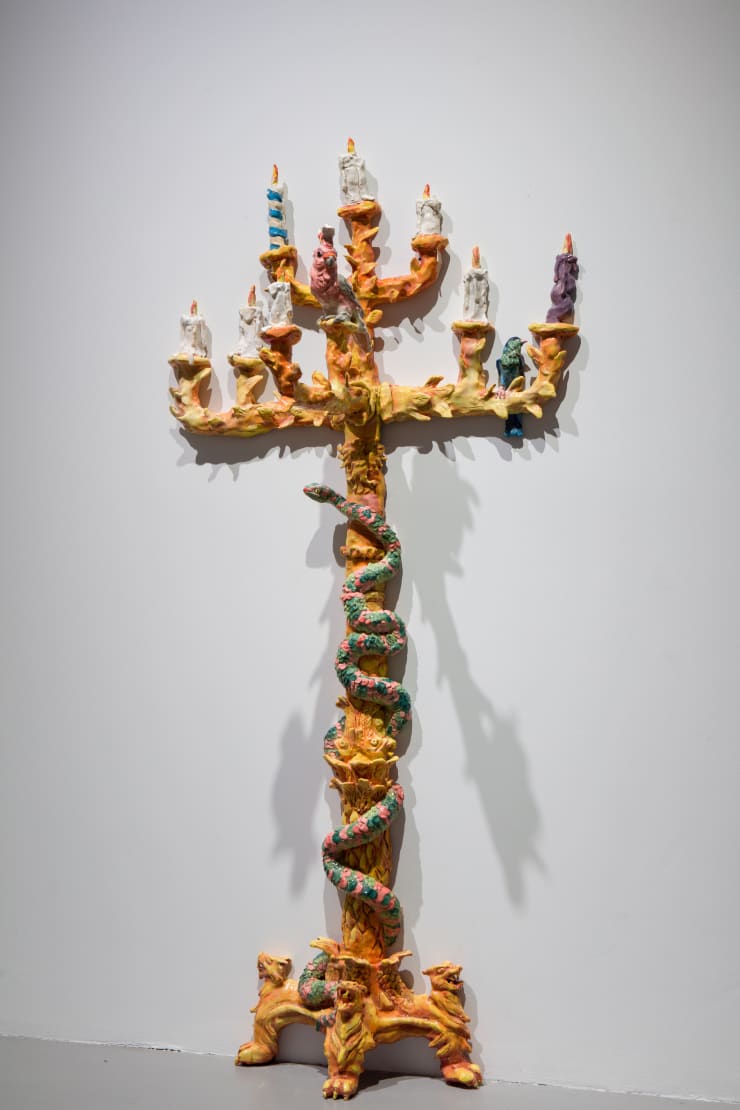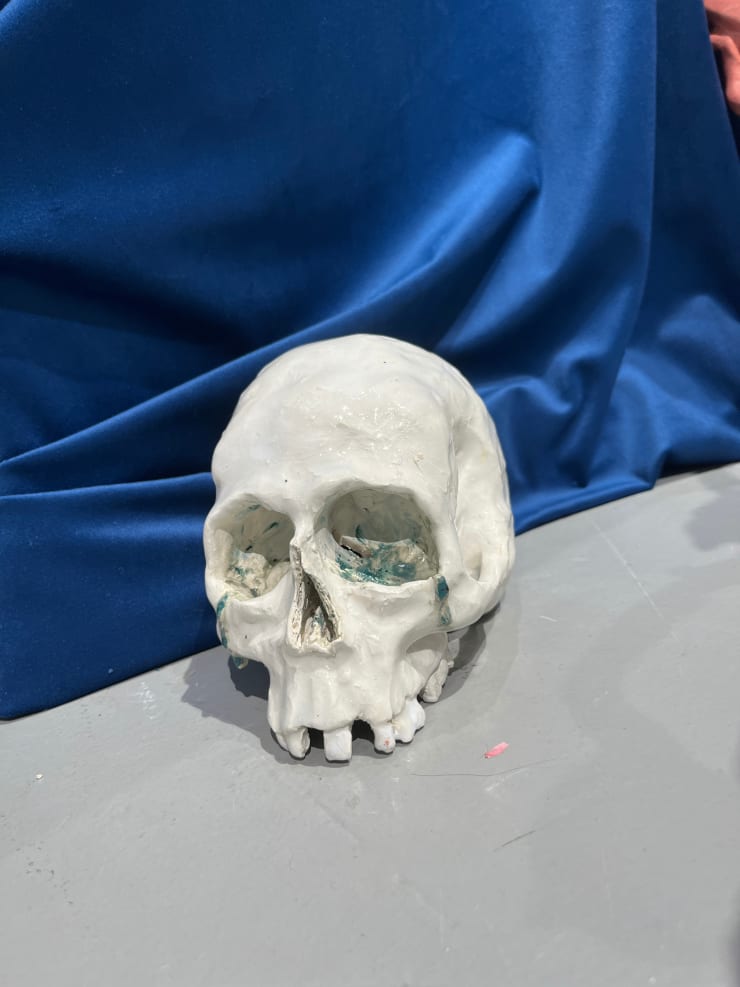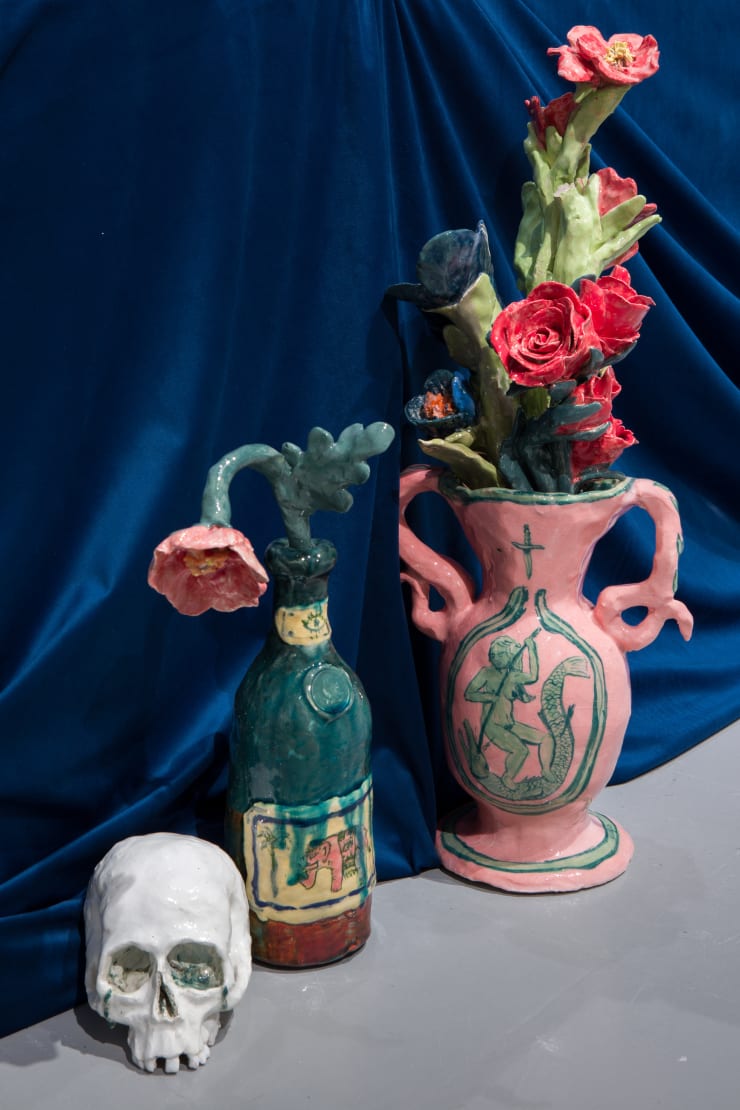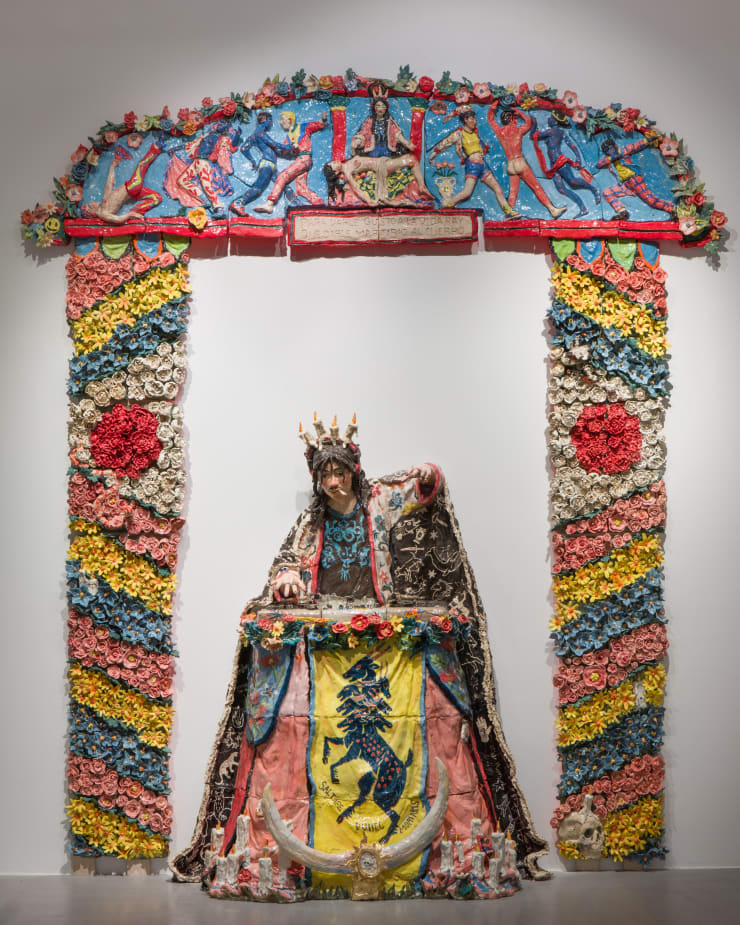Julio Galindo: LA RAVE DE DIOS
Past exhibition
Overview
The work of ceramist Julio Galindo (Badajoz, 1988) is a platform from which he proposes a new mythology that explores terms such as the sacred, the spiritual and the religious. His pieces question concepts such as religiosity or sanctity, trying to update these notions from a contemporary point of view. His intention is to show that there is a possibility of finding profoundly existential aspects in our immediate surroundings. This idea undoubtedly goes through elevating to the level of sacred things that are not, but probably should be. Galindo studied Fine Arts at the University of Seville, where he specialized in Painting and Engraving.
The artist's current exhibition begins with a metaphor that compares the state of the planet to the atmosphere of a nightclub in its final hours, when only a few people are left looking to squeeze every last dance out of the night. This farewell scenario is transformed into a representation of humanity on the planet, living on the edge and enjoying pleasures to their ultimate consequences. The "last farewell party" of the human species reflects the wastefulness and the hedonistic search in a context of apparent imminent end. In this framework, the artist investigates new religious forms of communion, presenting a scene in which all participants are immersed in excess. Religious symbols are reinterpreted: the DJ becomes a Christ figure, the dead woman a natural Virgin, a boy with a lamb and a snake, all representing subtly perverted religious iconographies. This "party of the future" democratizes the sacred, bringing spirituality into a festive and profane context, while still evoking the magic and mysticism inherent in these symbols.
The subversion of sanctity and the creation of new mythological narratives are constant in his work, reflecting an ongoing quest to redefine the sacred in the contemporary era. The representation of an uncontrolled party where religious symbols mingle with scenes of excess and communion is a clear example of how the artist democratizes and decontextualizes the sacred, inviting the viewer to reconsider his or her own conceptions of spirituality and religiosity.
Since his first contact with ceramics in Florence, his sculptures have been exhibited in institutions such as the Centro de Arte Tomás y Valiente, Fuenlabrada, Madrid; the Centro Cultural La Carolina in Jaén; in the Torre de Don Borja Santillana in Cantabria; in Chapelle Saint-Jacques Centre d'Art Contemporain in France or the Palazzo Medici-Riccardi in Florence.
Works
-
 Julio GalindoLamentación, 2024Earthenware, ceramic pigments and glaze134 x 230 x 133 cm
Julio GalindoLamentación, 2024Earthenware, ceramic pigments and glaze134 x 230 x 133 cm
52 3/4 x 90 1/2 x 52 3/8 inCourtesy of Veta Galeria SLCopyright The Artist -
 Julio GalindoSaltare Donec Moriaris, 2024Earthenware, ceramic pigments and glaze360 x 254 x 60 cm
Julio GalindoSaltare Donec Moriaris, 2024Earthenware, ceramic pigments and glaze360 x 254 x 60 cm
141 3/4 x 100 x 23 5/8 inCourtesy of Veta Galeria SLCopyright The Artist -
 Julio GalindoDevota, 2024Earthenware, ceramic pigments and glaze170 x 140 x 75 cm
Julio GalindoDevota, 2024Earthenware, ceramic pigments and glaze170 x 140 x 75 cm
66 7/8 x 55 1/8 x 29 1/2 inCourtesy of Veta Galeria SLCopyright The Artist -
 Julio GalindoMoscóforo, 2024Earthenware, ceramic pigments and glaze180 x 110 x 85 cm
Julio GalindoMoscóforo, 2024Earthenware, ceramic pigments and glaze180 x 110 x 85 cm
70 7/8 x 43 1/4 x 33 1/2 inCourtesy of Veta Galeria SLCopyright The Artist -
 Julio GalindoAthenas, 2024Earthenware, ceramic pigments and glaze211 x 55 x 12 cm
Julio GalindoAthenas, 2024Earthenware, ceramic pigments and glaze211 x 55 x 12 cm
83 1/8 x 21 5/8 x 4 3/4 inCourtesy of Veta Galeria SLCopyright The Artist -
 Julio GalindoLa Rave de Dios, 2024Earthenware, ceramic pigments and glaze183 x 75 x 12 cm
Julio GalindoLa Rave de Dios, 2024Earthenware, ceramic pigments and glaze183 x 75 x 12 cm
72 x 29 1/2 x 4 3/4 inCourtesy of Veta Galeria SLCopyright The Artist -
 Julio GalindoPetauro, Mariposa y Jilguero, 2024Earthenware, ceramic pigments and glaze130 x 120 x 33 cm
Julio GalindoPetauro, Mariposa y Jilguero, 2024Earthenware, ceramic pigments and glaze130 x 120 x 33 cm
51 1/8 x 47 1/4 x 13 inCourtesy of Veta Galeria SLCopyright The Artist -
 Julio GalindoPortador de Luz, 2024Earthenware, ceramic pigments and glaze193 x 90 x 47 cm
Julio GalindoPortador de Luz, 2024Earthenware, ceramic pigments and glaze193 x 90 x 47 cm
76 x 35 3/8 x 18 1/2 inCourtesy of Veta Galeria SLCopyright The Artist -
 Julio GalindoMichi con Ofrenda, 2024Earthenware, ceramic pigments and glaze48 x 75 x 44 cm
Julio GalindoMichi con Ofrenda, 2024Earthenware, ceramic pigments and glaze48 x 75 x 44 cm
18 7/8 x 29 1/2 x 17 3/8 inCourtesy of Veta Galeria SLCopyright The Artist -
 Julio GalindoJarrón Amarillo, 2024Earthenware, ceramic pigments and glaze79 x 31 x 13 cm
Julio GalindoJarrón Amarillo, 2024Earthenware, ceramic pigments and glaze79 x 31 x 13 cm
31 1/8 x 12 1/4 x 5 1/8 inCourtesy of Veta Galeria SLCopyright The Artist -
 Julio GalindoJarrón Rosa, 2024Earthenware, ceramic pigments and glaze65 x 13 x 13 cm
Julio GalindoJarrón Rosa, 2024Earthenware, ceramic pigments and glaze65 x 13 x 13 cm
25 5/8 x 5 1/8 x 5 1/8 inCourtesy of Veta Galeria SLCopyright The Artist -
 Julio GalindoBotella con Flor, 2024Earthenware, ceramic pigments and glaze40 x 9 x 9 cm
Julio GalindoBotella con Flor, 2024Earthenware, ceramic pigments and glaze40 x 9 x 9 cm
15 3/4 x 3 1/2 x 3 1/2 inCourtesy of Veta Galeria SLCopyright The Artist -
 Julio GalindoCalavera, 2024Earthenware, ceramic pigments and glaze10 x 10 x 15 cm
Julio GalindoCalavera, 2024Earthenware, ceramic pigments and glaze10 x 10 x 15 cm
4 x 4 x 5 7/8 inCourtesy of Veta Galeria SLCopyright The Artist -
 Julio GalindoRavera Coronada, 2024Earthenware, ceramic pigments and glaze187 x 136 x 90 cm
Julio GalindoRavera Coronada, 2024Earthenware, ceramic pigments and glaze187 x 136 x 90 cm
73 5/8 x 53 1/2 x 35 3/8 inCourtesy of Veta Galeria SLCopyright The Artist
Installation Views
News
-

EL CULTURAL
Especial Cerámica: el arte contemporáneo vuelve a sus orígenes en una nueva era de la Edad del Barro July 30, 2024 Read more -
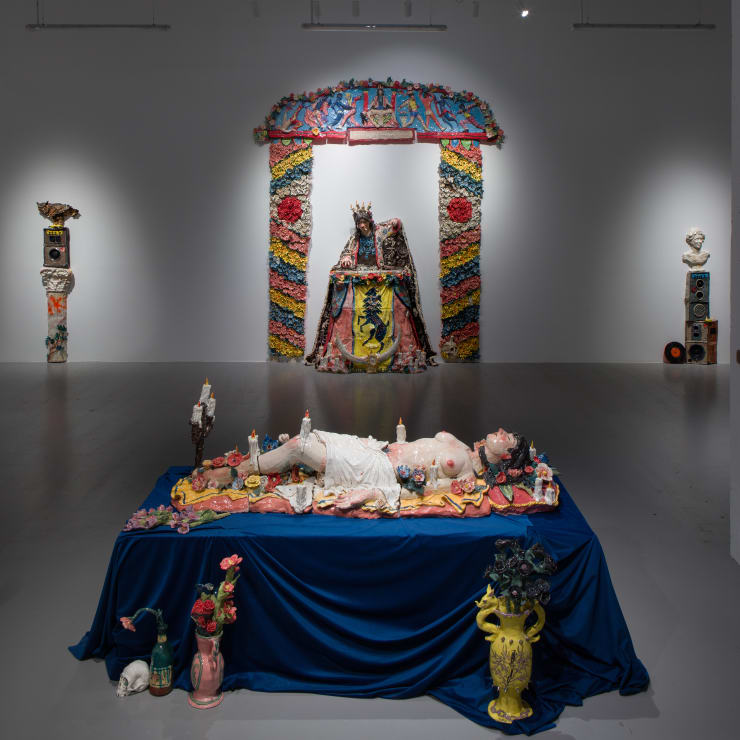
HIGHXTAR
GALERÍA VETA PROGRAMA NUEVAS EXPOSICIONES PARA EL VERANO July 23, 2024Galería VETA by Fer Francés ha anunciado la programación nuevas exposiciones individuales para este verano: La rave de Dios y Here’s to feeling good all...Read more



